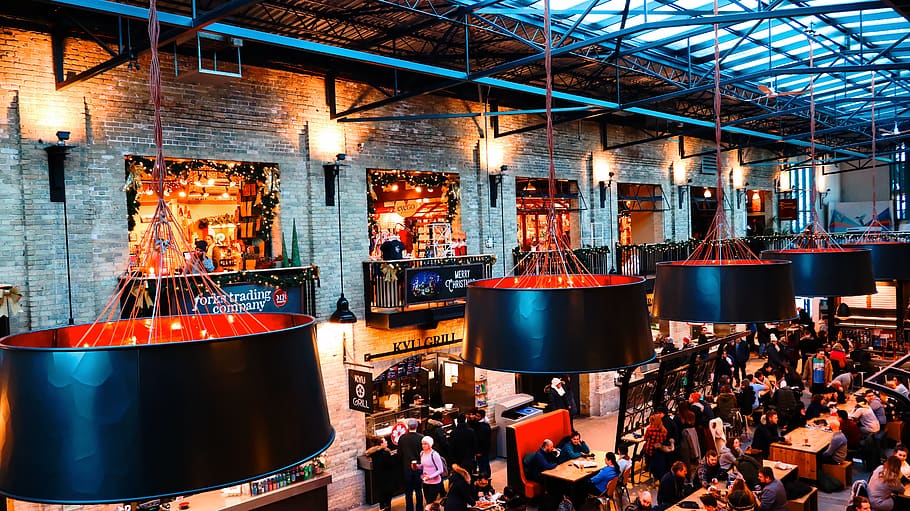Canadian landscape architecture is a testament to the symphony of aesthetics and functionality, where the canvas of outdoor spaces is transformed into dynamic, living art. At the heart of this creative endeavor lies Keen Construction, an innovative force delving deep into the art of curating landscapes that eloquently harmonize beauty and purpose. As we embark on this exploration, the intricate strategies, timeless principles, and remarkable projects that breathe life into this delicate harmony are unveiled, demonstrating the profound impact of this union on the Canadian landscape.

The Principles of Aesthetic-Functional Harmony in the Canadian Landscape Architecture Paradigm
In Canadian landscape architecture, the essence lies in embracing the diverse natural surroundings while integrating practicality seamlessly. This paradigm revolves around:
- Environmental Responsiveness: This pillar of Canadian landscape architecture entails crafting outdoor spaces that act as harmonious extensions of their natural surroundings. Designers meticulously analyze the local climate, topography, and ecosystems, using these insights to shape their creations. By aligning the landscape with its environment, these designs naturally conserve resources and minimize their ecological footprint. Moreover, this approach fosters sustainability by reducing the need for excessive maintenance and interventions. The result is a landscape that thrives in harmony with nature, creating a lasting legacy of beauty and environmental stewardship.
- Cultural Context: This facet of Canadian landscape architecture involves more than just design; it’s about storytelling through spaces. Architects skillfully weave elements from Canada’s rich tapestry of culture, history, and indigenous heritage into their creations. By incorporating symbols, motifs, and materials that hold cultural significance, landscapes come alive with a palpable sense of identity. This interplay of elements imparts a unique character to each project, fostering a deep connection between people, place, and the shared narrative of the land.
- User-Centric Approach: At the heart of Canadian landscape architecture is a dedication to designing spaces that prioritize the people who will experience them. This approach goes beyond aesthetics, diving into the realm of human interaction and well-being. Landscape architects meticulously consider the needs, desires, and behaviors of those who will inhabit the space. The result is a design that seamlessly integrates user-friendly features, intuitive layouts, and functional elements. By anticipating how people will interact with the environment, these designs foster a sense of belonging, enabling individuals to engage with outdoor spaces effortlessly, fostering a sense of belonging, and enriching their daily lives.
Form Meets Function: Strategies for Achieving Balance
In the realm of design, the delicate dance between form and function has forever captivated the creative mind. It is in this enchanting interplay that the essence of harmonious design lies—a perfect balance where aesthetics seamlessly merge with practicality. This balance is particularly profound in the realm of Canadian landscape architecture, where outdoor spaces are not merely created, but curated to embody both beauty and purpose. In this exploration of strategies for achieving this exquisite equilibrium, we delve into the art of seamlessly blending form and function within the tapestry of landscapes. From insightful site analysis to material selection and beyond, we uncover the blueprint that transforms outdoor spaces into living works of art that are as useful as they are breathtaking. The whole process involves:
1. Thoughtful Site Analysis to Balance Aesthetics and Functionality
This foundational step in Canadian landscape architecture involves a comprehensive exploration of a site’s characteristics and constraints. Landscape architects meticulously study attributes like terrain, soil composition, microclimates, and existing vegetation. By delving into these details, designers gain invaluable insights that guide their creative decisions. This thorough analysis not only informs the layout and design but also ensures that the final creation harmoniously coexists with the natural surroundings. The result is a landscape that feels as if it was always meant to be there, seamlessly blending into the broader environment while enhancing its beauty and functionality.
2. Functional Zoning
This artful approach in Canadian landscape architecture involves skillfully dividing outdoor spaces into distinct zones, each tailored for specific activities. Architects strategically allocate areas for relaxation, play, socializing, and more. The magic lies in the seamless transitions between these zones, creating a fluid and intuitive user experience. By thoughtfully choreographing these spaces, landscapes become versatile havens that cater to diverse needs, ensuring that every corner serves a purpose while contributing to the overall harmony. This meticulous zoning enhances both the visual appeal and the practical functionality of the landscape, empowering people to effortlessly navigate and engage with the environment.
3. Material Selection
A crucial decision in Canadian landscape architecture, this process involves selecting materials that bridge aesthetics and longevity. Landscape architects carefully evaluate a range of factors, including visual appeal, durability, and environmental impact. The chosen materials must withstand the local climate’s challenges, ensuring resistance to weathering and erosion. Equally vital is considering the ecological footprint, favoring sustainable options that align with the landscape’s surroundings. The result is a harmonious blend of beauty and functionality, where materials become essential components in crafting enduring outdoor spaces that age gracefully while minimizing environmental impact.
4. Planting Landscape Design Strategy
A vital facet of Canadian landscape architecture, planting design is a thoughtful curation of flora that not only enhances aesthetics but also supports the environment. Landscape architects carefully handpick plant species that flourish within the local climate, ensuring their resilience against weather conditions. This selection also emphasizes biodiversity, introducing native and adaptive species that enrich the ecosystem and promote a healthy balance. By orchestrating a diverse palette of plants, architects infuse the landscape with seasonal interest, capturing the changing hues and textures throughout the year. This harmonious blend of vegetation not only elevates the visual allure but also nurtures the ecological equilibrium of the space, creating a thriving haven that contributes to the well-being of both people and the planet.
Canadian Landscape Architectural Marvels Showcasing Aesthetic-Functional Synergy
The Toronto Music Garden: A Blend of Aesthetics and Functionality

It stands as an exquisite testament to the enchanting fusion of artistic vision and natural beauty. Conceived by the collaborative genius of landscape architect Julie Moir Messervy and world-renowned cellist Yo-Yo Ma, this garden transcends conventional aesthetics, transforming into a living symphony that resonates with the heart and soul. Designed to embody Bach’s timeless Suite No. 1 in G Major, the garden orchestrates a harmonious dialogue between design elements and musical notes. Winding paths evoke the rhythm of the composition, while water features cascade like melodious phrases, creating a multisensory journey that seamlessly intertwines music, nature, and human connection. Every meticulously placed plant becomes a note in this botanical score, inviting visitors to explore a realm where art and landscape coalesce, creating an immersive experience that leaves an indelible mark on the senses and the soul. The Toronto Music Garden is more than a garden; it is a masterpiece in every sense—a testament to the power of design to evoke emotions, tell stories, and transport us to realms where creativity and nature harmonize.
VanDusen Botanical Garden: Quintessential Canadian Landscape Architecture

Nestled in the heart of Vancouver, the VanDusen Botanical Garden stands as a living testament to the seamless harmony between human creativity and the splendor of the natural world. This iconic garden transcends the boundaries of traditional landscaping, evolving into an awe-inspiring sanctuary that celebrates nature in all its forms. Anchored in its indigenous flora, the garden becomes a canvas where vibrant colors, textures, and scents intertwine to create a visual and sensory spectacle. Art installations dot the landscape, sparking intriguing conversations between artistic expression and botanical wonders. Beyond its aesthetic allure, the VanDusen Botanical Garden is a beacon of sustainable practices, demonstrating how beauty and environmental stewardship can flourish hand in hand. Visitors embark on a journey of discovery, where every nook and corner educates, inspires, and offers a tranquil escape from the bustle of urban life. The garden transforms into more than just a physical space; it becomes a realm where nature’s symphony resonates, where sustainable practices harmonize with artistic creativity, and where visitors find solace, knowledge, and delight amidst the lush embrace of botanical beauty.
The Forks, Winnipeg

In the heart of Winnipeg, The Forks emerges as a living tapestry that weaves together the threads of history and contemporary vibrancy. This iconic locale, once a historic trading hub, now stands as a testament to the art of transformation—a space where the past gracefully melds with the present, resulting in a captivating haven for locals and visitors alike. Here, the echoes of bygone eras intertwine seamlessly with modern urban planning, giving rise to a multifaceted landscape that caters to a diverse array of activities. The legacy of its trading past remains palpable, whispering tales of commerce and cultural exchange through the architecture and atmosphere. Amidst this historical backdrop, modern urban planning has breathed new life into The Forks, offering a plethora of spaces that cater to events, markets, and leisurely pursuits. This fusion of history and modernity creates an enchanting synergy, where each footstep taken is a stride through time, and where the lines between history, culture, and leisure blur into a harmonious narrative. The Forks is more than a destination; it’s a living canvas that unfolds the chapters of Winnipeg’s past while inviting all to partake in the chapters yet to be written—a space where history converges with modern ingenuity, and where the echoes of the past resonate amidst the vibrancy of the present.
The world of Canadian landscape architecture showcases the artful equilibrium between aesthetics and functionality. Keen Construction continues to be a driving force in designing outdoor spaces that encapsulate the essence of nature, culture, and usability. By embracing the principles, strategies, and inspirations outlined in this post, Keen Construction continues to shape the Canadian landscape with beauty and purpose. If you’re inspired to transform your outdoor space into a masterpiece that harmonizes aesthetics and functionality, don’t hesitate to contact Keen Construction. Our team of passionate professionals is ready to collaborate with you, crafting outdoor wonders that leave a lasting imprint of beauty, functionality, and harmony.




